Decoding Canine Behavior
Images used with permission from artist, Emma Trithart.
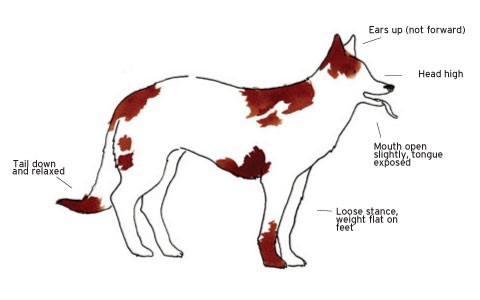 |
RELAXED POSTURE The relaxed approachable posture, as shown, is generally a non-threatening stance and indicates the dog is relaxed. Heightened officer concern is not necessary, as dogs with this posture are generally safe and approachable. |
|
ALERT POSTURE The alert posture indicates the dog is interested by something within his range of vision and is paying attention to things going on around him. Generally, officers should be more cautious than with a relaxed dog, but a defensive posture by the officer is unnecessary. |
 |
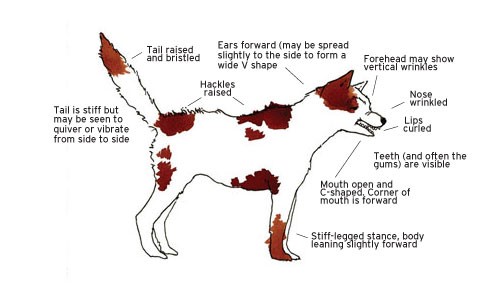 |
DOMINANT AGGRESSIVE POSTURE The dominant aggressive posture occurs as a dog attempts to assert his dominance over anything or anyone in his area of control. Officers should be extremely cautious when approaching a dog with this posture, as the dog may act aggressively towards any threats he perceives, including the officer. |
|
FEARFUL AGGRESSIVE POSTURE A fearful and aggressive dog will exhibit similar positioning as a dominant aggressive dog, but his action arises from his fear, rather than perceived dominance. However, dogs with this posture will still act aggressively if threatened, and extreme caution should be exercised by officers confronted by a fearful and aggressive dog. |
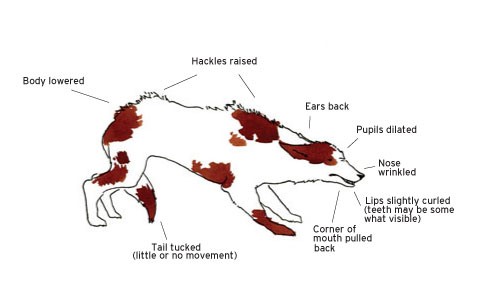 |
 |
STRESSED POSTURE Stressed/distressed dogs are reacting to a social or environmental stressor. These dogs are generally not a threat but may become one based on his perception of actions taken against him. Officers should proceed cautiously and attempt to relax the dog through actions or words. |
|
FEARFUL AND WORRIED POSTURE A fearful and worried dog is generally in a position of submission. His actions are usually an attempt to avoid conflict with anyone he views as dominant. Officers are in advantageous position with these dogs and should verbally assert their dominance, while not acting too aggressively or this dog could turn from fearful and worried to fearful and aggressive. |
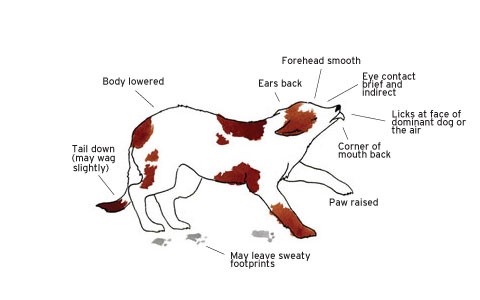 |
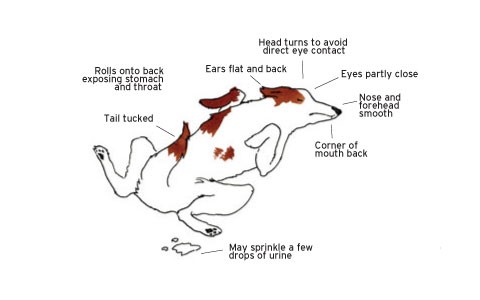 |
EXTREME FEAR POSTURE An extremely fearful dog will immediately show submission and surrender to anyone he views as dominant. Coren says this posture is the equivalent to an inferior groveling at the feet of a superior. As such, officers should affirm their dominance, yet approach gently and nonthreateningly. |
|
PLAYFUL POSTURE Playful dogs are just that – playful. They may excitedly bark or advance towards another dog or human, but their intentions are not threatening or challenging. Officers should be alert to this posture and be careful not to confuse it with a dominant aggressive dog. Playful dogs are not usually a threat to officers. |
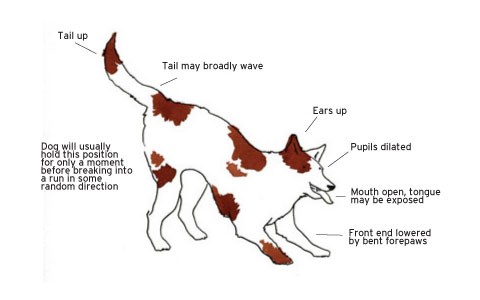 |
Images appeared in 2014 article, How To Read Your Dog's Body Language by Stanley Coren, psychology professor and neuropsychological researcher known for his work with dogs.



